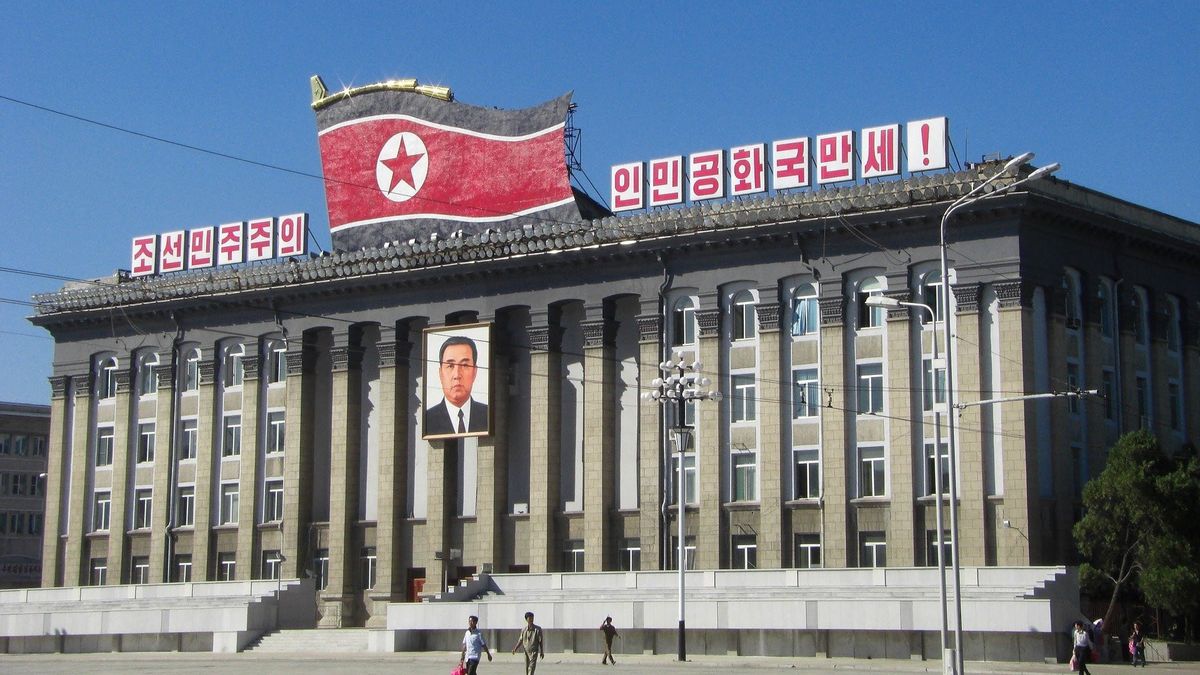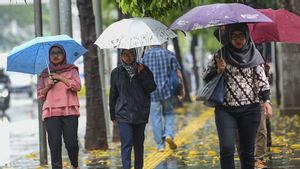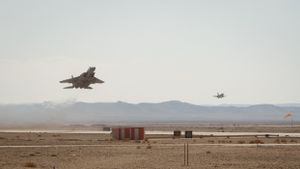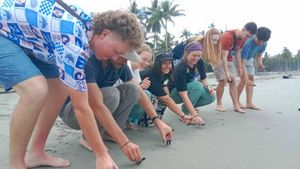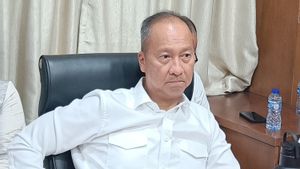JAKARTA - North Korea can get all the uranium it needs for nuclear weapons through its existing Pyongsan plant, with satellite imagery of the tailings pile showing the country can produce far more nuclear fuel than it does, a new academic study concludes.
Despite a self-imposed moratorium on nuclear weapons testing since 2017, North Korea says it is continuing to build its arsenal, and this year appears to have restarted a reactor widely believed to have produced weapons-grade plutonium.
According to research published last month in the journal Science & Global Security by researchers at Stanford University and an Arizona-based mining consulting firm, North Korea may be able to ramp up production, and not need another uranium plant.
"It is clear that the DPRK appears to have a much larger milling capacity than has been used to date," the report said, using the initials of North Korea's official name, the Democratic People's Republic of Korea.
"This means that the DPRK can produce much larger quantities of milled natural uranium if desired," the report continued.
The Pyongsan Uranium Concentration Plant and its associated mines are the only publicly recognized source of 'yellow cake', or uranium ore in North Korea, according to analysts.
The report comes as other satellite images show North Korea is building a major expansion at the Yongbyon nuclear reactor, which analysts say could be used to produce weapons-grade uranium.
"Given the DPRK's active nuclear program, it is critically important to assess and understand its nuclear material production capabilities," wrote the authors of the report, who submitted their findings in April.
This capability regulates the rate at which North Korea can expand its nuclear arsenal, determines the magnitude of the threat to international security and potential nuclear disarmament challenges, measures North Korea's ability to push forward its nuclear energy program in the future, the report said.
The question of how many nuclear weapons North Korea has is a key issue for intelligence agencies in South Korea and the United States, as well as for any talks aimed at limiting or reducing North Korea's arsenal.
The United States, which wants Pyongyang to give up its nuclear arsenal, has said it is open to meeting with North Korea without preconditions. Meanwhile, North Korea says talks are only possible after the United States and its allies abandon hostile policies.
Intelligence on North Korea's nuclear weapons is limited, but David Albright, president of the Institute for Science and International Security, told Reuters he estimates the country has the capacity to produce material for four to six warheads a year.
Separately, the head of the International Atomic Energy Agency (IAEA) said in September, "North Korea's nuclear program is running vigorously with work on plutonium separation, uranium enrichment and other activities."
No reports were reported of outside inspectors' access to the Pyongsan uranium mine after the IAEA visited in 1992, leaving details of the plant uncertain, the academic report said.
The authors used an artificial intelligence algorithm developed by Orbital Insight, a California-based geospatial analysis firm, to analyze satellite imagery for land use patterns around the Pyongsan facility.
Yellow cake from mines and factories is a key component of North Korea's production of nuclear fuel, including its 5 megawatt (MW) reactor, which is seen as capable of producing weapons-grade plutonium.
To note, the IAEA and other analysts reported last summer that North Korea's nuclear reactor appeared to be operational for the first time since 2018.
The English, Chinese, Japanese, Arabic, and French versions are automatically generated by the AI. So there may still be inaccuracies in translating, please always see Indonesian as our main language. (system supported by DigitalSiber.id)
